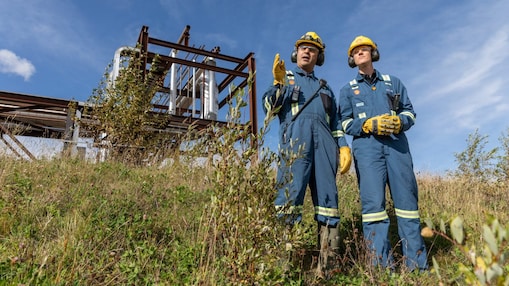
Air

Reducing our impact
Groundbirch has a GHG Energy Management plan in place with several emission reduction projects and plans, each with various stages of maturity. While actively pursuing projects, Groundbirch also focuses on many process improvements that will help build a robust and continuous emissions management process.
- Shell is part of an external industry group called the Oil and Gas Methane Partnership which is focused on improving methane measurement.
- We employe a federal and provincial compliant leak detection and repair program.
- We deploy electric actuator technology on our well pads to eliminate venting.
- Though flares do have continuous pilot flames, no continuous flaring and venting takes place in the Groundbirch asset.
- We have a range of technologies and work practices in place to help find and address unintended – or fugitive–methane emissions in our operations. We also implement energy-efficiency measures, as well as flaring and venting reduction programs.